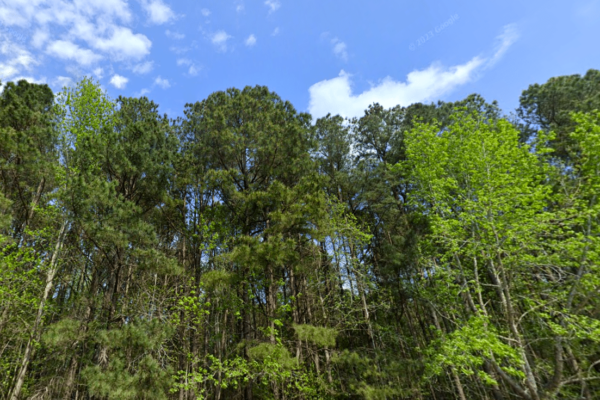Faits marquants
- Preserves 24 acres of 80-year-old mixed pine and hardwood forest from residential development in Virginia Beach, VA.
- Contributes to numerous benefits for residents, including improved air quality, energy savings through increased shade, and reduced stormwater runoff.
- Mitigates ecological risks associated with climate change, particularly in the vulnerable low-lying Tidewater region of Virginia, where flood risk is heightened due to sea level rise and a high water table.
Plus d'informations
Amidst the rapid urbanization of Virginia Beach, this project stands as a vital oasis of nature, encompassing 24 acres of diverse flora, including aged pine and hardwood trees. The conservation efforts extend beyond mere preservation; they aim to enhance the overall well-being of Virginia Beach residents. Through the preservation of this forest, the project seeks to provide health, environmental, and recreational benefits to residents such as improved air quality, increased shade and energy savings, and reduced stormwater runoff.
The City of Virginia Beach has a strong military presence and the associated demands for housing and commercial development have accelerated deforestation exacerbating the ecological risks of climate change in Virginia’s coastal plain. Forest preservation in the low-lying Tidewater region of Virginia is particularly important due to flood risk accompanying sea level rise and a high water table. Overall, in safeguarding this haven amidst the urban sprawl, we not only protect a crucial ecosystem but also nurture a sanctuary that fosters the resilience and vitality of Virginia Beach’s community in the face of ecological challenges, forging a sustainable legacy for generations to come.
Photos du projet
Impacts du projet
Biodiversité et écosystèmes
The Virginia Beach Forest project protects an area of 24.29 acres of mixed pine and lowland hardwood forest situated centrally in the City of Virginia Beach between the predominantly rural southern region and the residential northern region. The forest is separated into distinct area differing in age. Area one is a dense 30-year-old stand of loblolly pine and lowland hardwood species that naturally regenerated on previous agricultural fields. Area two is a previously unmanaged 90-year-old stand of mature lowland hardwood species including white and willow oak, sweetgum, and red maple, along with a smaller proportion of loblolly pine, typical of low-lying mesic sites in the coastal plain. The forest is predominantly located in a floodplain draining into West Neck Creek, which provides a valuable buffer between residential neighborhoods and the creek.
Développement communautaire
Protecting the Virginia Beach Forest will reduce the impact of climate disasters and flooding risk for adjacent residential areas by reducing stormwater runoff, preserving soil health, and preventing conversion into impervious surfact. The forest will also help mitigate urban island effects for residents, or the measurable increase in temperatures resulting primarily from the replacement of vegetation with buildings, roads, and other heat-aborbing infrastructure.
Réductions des émissions et certifications
Virginia Beach Forest project, officially known as Wilson Family Forest, will prevent the emissions of 3,139 tonnes of CO2 over its 40-year lifetime, validated and verified under the City Forest Credits Standard.
Species
The Virginia Beach Forest is home to diverse wildlife and provides essential habitat for many species. Due to its proximity to West Neck Creek, preservation of the forest has a positive impact on the fish and other wetlands wildlife including waterfowl, turtles, and snakes. The forest is also home to many birds, such as Red-headed woodpeckers, Ovenbirds, Great crested flycatchers, and Barred owls.
Rapport de conformité
City Forests Credits Project ID: 035
Documentation: Wilson Family Forest Project Verification
(required by CA AB1305)












